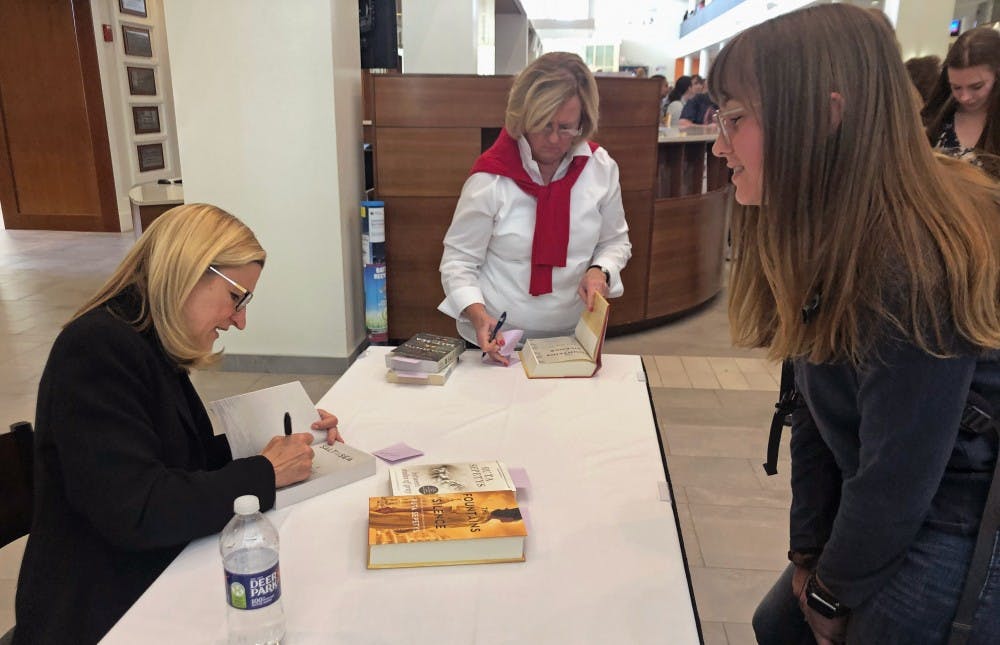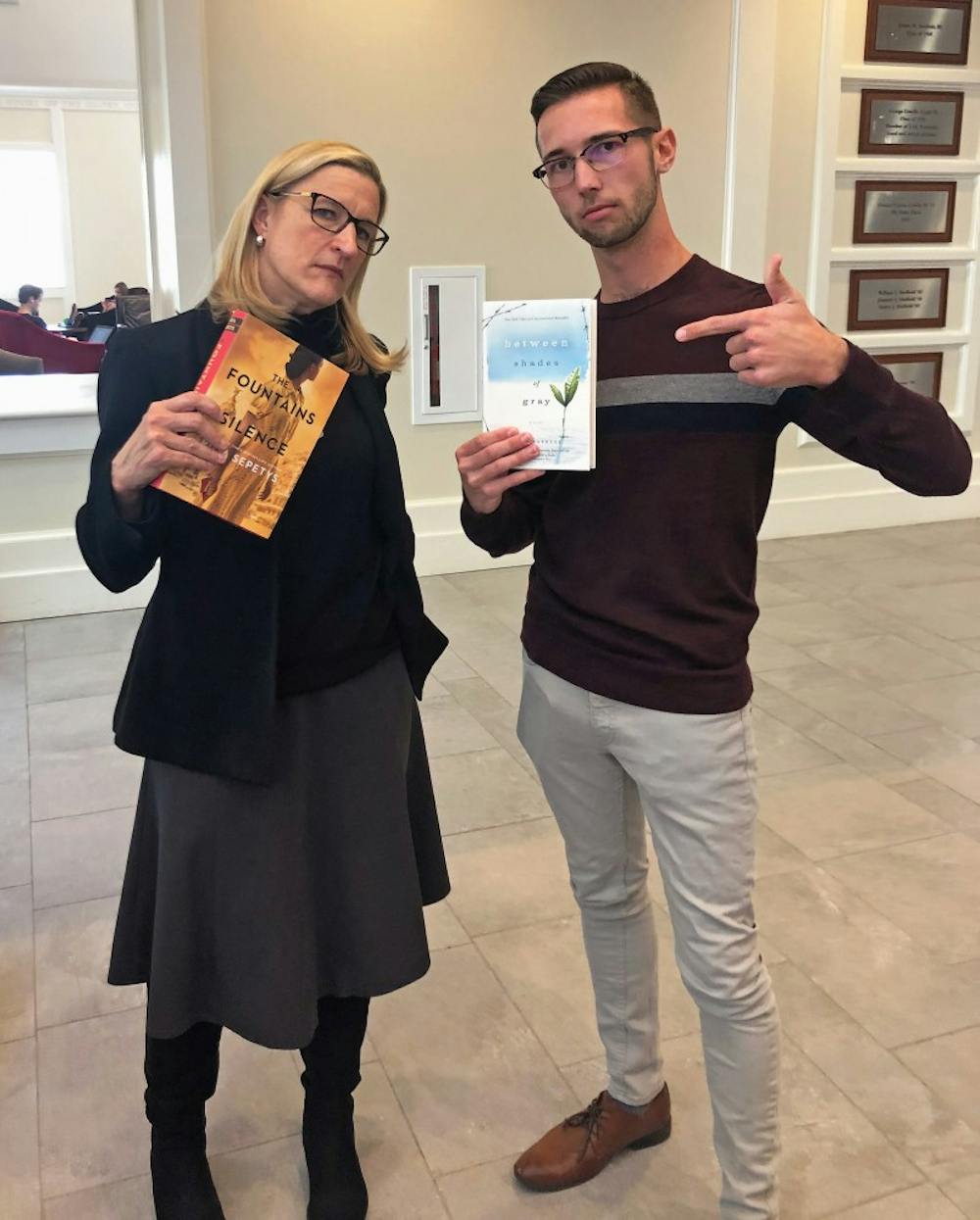The first question for New York Times bestselling author Ruta Sepetys was not about her own historical fiction works but another “shades of grey” book that came out the same year as her debut novel.
The “Between Shades of Gray” writer turned toward the audience with a hand under her chin and a wry smile.
“Lithuania has never looked so sexy,” she said, before bursting into laughter and breaking character. The audience roared along with her.
On Tuesday, Oct. 15, Sepetys visited Miami’s campus and sat down in Wilks Theater with Dr. Stephen Norris, director of the Havighurst Center for Russian and Post-Soviet Studies. The Havighurst Center collaborated with the young adult English program in the teacher education department to host Sepetys for the day.
The two departments brought the Lithuanian-American writer to Miami because her novels outline the challenges and struggles that marginalized or “silenced” groups faced during major world conflicts. “Between Shades of Gray,” her most popular book, describes the deportation of Lithuanians by the Soviet Union during World War II through the eyes of an adolescent girl.
But part of the reason why her historical novels are so captivating is because Sepetys infused her own family background into her work. At four years old, her father was forced to flee Lithuania to escape those same Soviet troops threatening deportation. He spent nine years floating around refugee camps before reuniting with his parents. When he was 15, Sepetys’ father finally escaped to the United States with her grandfather.
Her grandfather’s Lithuanian relatives, however, weren’t so lucky. When Sepetys traveled to Lithuania for the first time to meet her extended family, they grimly told her about the 12 relatives who were sent to Siberian labor camps and death camps following her grandfather’s escape.
Sepetys couldn’t believe she’d never known about such a devastating part of her family’s history — but also that no one else seemed to know about the Lithuanian peoples’ tragic experience.
“At that moment, sitting there, realizing that my freedom came at the expense of my grandfather’s family members, I decided I was gonna write a book,” Sepetys said. “One girl, her dreams of freedom and her voice to speak for the millions of victims of communism who never had a chance to tell their story. And that became ‘Between Shades of Gray.’”

Impassioned and determined to bring this narrative forward, Sepetys set out to speak with survivors and “true witnesses” to the events she wanted to write about. “Getting [her] feet on the ground” was a huge part of Sepetys’ research process, allowing her to conceptualize what happened as accurately as possible.
“I wrote the book, but it’s not my story,” Sepetys said. “Their history wrote this story.”
Enjoy what you're reading?
Signup for our newsletter
Over the next eight years, Sepetys wove together true witnesses’ testimonies, more of her family history and extensive archival research into three more historical pieces: “Out of the Easy,” “Salt to the Sea” and her newest novel, “The Fountains of Silence.” The books cover growing up in a New Orleans brothel, the greatest maritime disaster in history and the terrors of the Spanish Civil War under Francisco Franco’s regime, respectively.
Despite these heavy topics, Sepetys emphasized how her books are meant for young students and adults alike. Even amid criticisms from fellow authors for “not being taken seriously” as a children’s author, Sepetys champions for this knowledge to be shared with young readers.
“I said, ‘Kind sir—I don't think you understand children's books. You know, children’s books are not about an I or a me; they’re about a we,’” Sepetys said as she detailed her experience at a Berlin literature festival. “Together we shall learn and grow and create hope for a more just future, and that’s so rewarding.”
To hear Sepetys talk about the importance of using powerful novels to illustrate key historical events excited several future middle school and high school English teachers in the audience.
Junior Alayna Cowden read two of Sepetys’ book earlier this semester, but now she can’t wait to share these compelling stories with her students one day.
“I want them to know about untold narratives — stories of people's lives that just aren't that obvious,” Cowden said. “I want them to know about history that might not be appearing in their textbooks and just cultivating a desire in them to learn more about people's stories and to ask questions about people's backgrounds.”
While anyone who reads Sepetys’ books will have the chance to spread the knowledge she’s cultivated with the world, the writer knows that her books will have a more lasting impact on the children who read them.
“I’m fortunate my books are read by adults, but boy, what a privilege to work with young people,” Sepetys said. “It’s an honor. “Young people are the future eyes to the past. They’re the ones that are gonna take us forward and also carry forward these fading stories into the future.”




